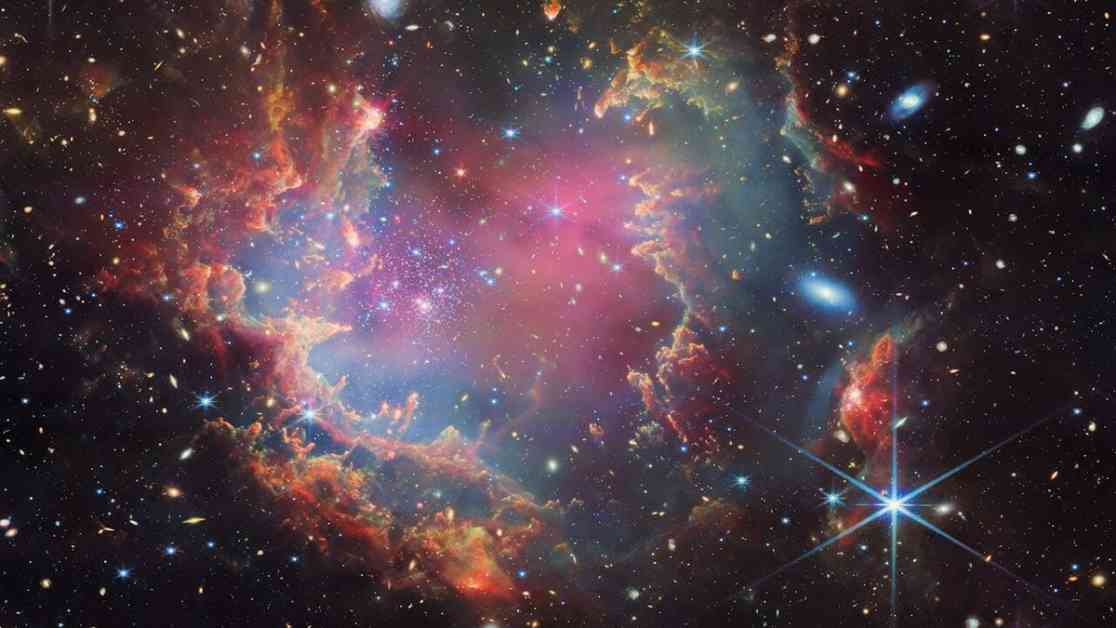Astronomers using the James Webb Space Telescope (JWST) have made an exciting discovery beyond our Milky Way galaxy. By focusing on the young star cluster NGC 602 in the Small Magellanic Cloud (SMC), they have potentially found evidence of brown dwarfs, also known as “failed stars,” for the first time outside of our galaxy. These objects are larger than planets but not massive enough to sustain nuclear fusion like stars.
The observations, including a stunning new image of the star cluster captured by JWST’s Near Infrared Camera, offer valuable insights into the formation of these mysterious failed stars. According to lead study author Peter Zeidler from the European Space Agency (ESA), brown dwarfs seem to form in a similar way to stars but lack the mass required to become fully-fledged stars.
NGC 602 is a young star-forming cluster located in the outskirts of the SMC, a satellite galaxy of the Milky Way. Previous observations with the Hubble Space Telescope revealed a population of young, low-mass stars within the cluster. However, the JWST’s sensitivity to infrared light has allowed astronomers to delve deeper into the characteristics of these stellar newborns, shedding light on their mass accumulation.
The research indicates that there are 64 stellar objects within the cluster with masses ranging between 50 and 84 times that of Jupiter. With brown dwarfs typically weighing between 13 and 75 Jupiter masses, many of these objects could be potential brown dwarfs, marking a significant discovery beyond our galaxy.
These failed stars are believed to have formed through the collapse of massive clouds of gas and dust, similar to the process of star formation. However, they never accumulate enough mass to sustain permanent fusion, distinguishing them from stars. Despite their failure to ignite, brown dwarfs could offer valuable insights into the early universe.
Studying these extragalactic failed stars further may help unravel the mysteries of star and planet formation in the early universe. NGC 602, with its low abundances of heavy elements, is considered to have a composition similar to that of the ancient universe. By examining the young metal-poor brown dwarfs in this cluster, scientists hope to gain a better understanding of the conditions under which stars and planets formed in the early universe.
The discovery of potential brown dwarfs beyond our galaxy opens up new possibilities for exploring the secrets of the cosmos. These findings not only enhance our knowledge of star formation but also provide a glimpse into the conditions that prevailed in the early universe. As astronomers continue to study these failed stars, we may uncover more about the fundamental processes that shape our universe.










